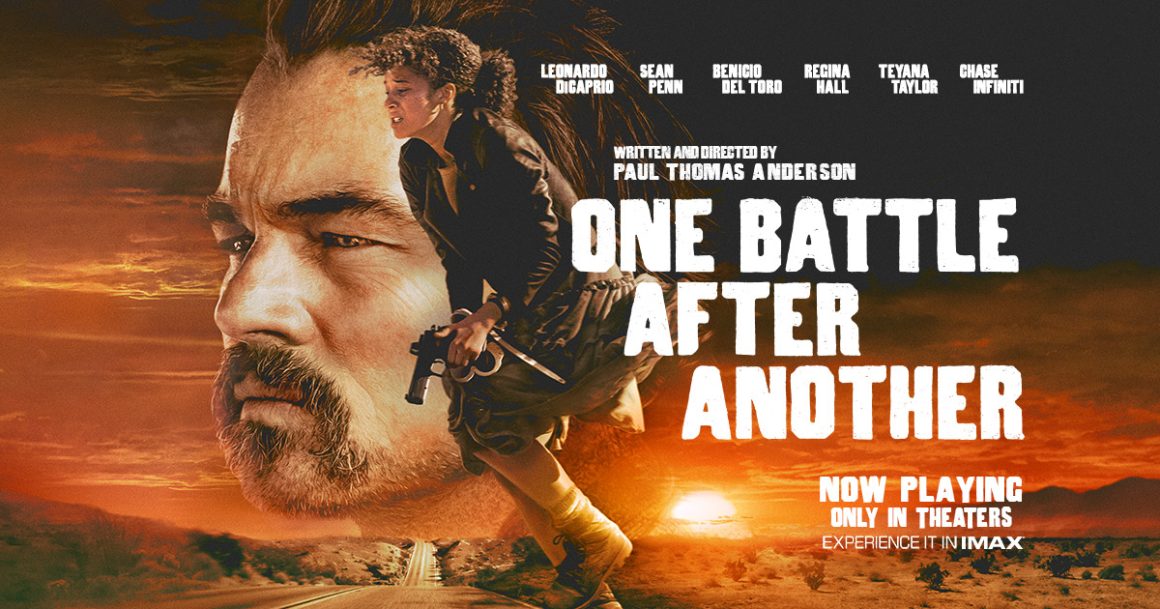Reviewed by Jonathan Diebold
On 25 September, an icon of the leftwing radicalism which shook America in the 1960s and 1970s passed away. Assata Shakur, a revolutionary, ex-Black Panther and leading member of the Black Liberation Army, died at the age of 78 while in political asylum in Cuba, where she had lived in exile since 1984.
On the same day as her death, Paul Thomas Anderson’s latest film One Battle After Another was released. The plot of this movie is inspired in large parts by activists like Shakur, and organisations like the Black Liberation Army, as well as other radical groups of the period, such as the Weather Underground. The film is based partially on Thomas Pynchon’s novel Vineland, which charts the lives of former student radicals as their past comes back to haunt them. The characters are hunted down after years of hiding – the novel is set in the year 1984, the very year Assata fled into exile.
One Battle After Another takes these elements into the present day. It follows an ex-bomber living under the alias Bob Ferguson (played by Leonardo DiCaprio), and his daughter Willa (Chase Infiniti). Bob has been living in hiding since the birth of his daughter – born during his activities in the French 75, a fictional radical left organisation involved in freeing detained immigrants caged in ICE-run internment camps (the first scene of the film shows a French 75 raid on Otay Mesa Detention Center, a real prison site on the California-Mexico border), as well as attacks on banks, infrastructure, and offices of politicians.
Bob and his daughter, now a teenager, are discovered and pursued by Steven J. Lockjaw (Sean Penn), a military officer who has pursued the French 75 since the detention centre raid. Unbeknownst to them, Lockjaw suspects he himself may be Willa’s father. Lockjaw is in the process of being recruited to the Christmas Adventurers Club, a secretive, prestigious, wealthy, and cult-like white supremacist organisation embedded in the US military and high society. Thus he seeks to hunt down Willa to ensure that there is no evidence that he once had an interracial relationship, which would prevent him from joining the club.
For all its political references and sympathetic portrayals of the radical left, the film is more concerned with shootouts and car chases than delving deeper into political themes and ideas. Nevertheless, the fact that this movie could be made, on a massive budget and by a mainstream studio, and was received so positively, reflects something of the mood in society today. It was released during an attempt to whip up a backlash against the left in the US, just two weeks after Charlie Kirk was shot dead, yet received little backlash itself and indeed to near universal acclaim. On movie review site Letterboxd it had the highest average rating of any film of 2025 on its release, and topped box office earnings on its opening weekend. Many pundits tip it for at least a nomination at the Oscars in 2026.
Themes of racism, misogyny, their links to the state, state repression, and leftwing resistance abound throughout the film. Benicio del Toro’s character in particular stands out as a calm martial arts sensei who doubles as a community leader in the struggle against the US’s racist border policies. The title of the film itself reflects not just the unrelenting challenges the protagonists must overcome to reunite, one obstacle after another being overcome without pause during the film’s hectic, nearly 3-hour runtime, but also an overarching idea that new generations of activists must step into political activity to renew and deepen the struggles against repression which previous generations have fought for.
One Battle After Another is an entertaining film with themes which anyone of the left might appreciate. However, it would be remiss not to mention the extreme absurdity of actors like Leonardo DiCaprio cosplaying as a leftwing revolutionary while, for example, investing millions in a luxury hotel in Israel during the genocide in Gaza, a news story which emerged as development on this film concluded. There’s something farcical about a movie which professes sympathies to movements against oppression and exploitation while starring his ilk, or directed by the likes of Paul Thomas Anderson who has had nothing to say about the genocide in Gaza, or indeed Trump, ICE, the Black Lives Matter Movement, or anything else which the characters in his film, had they existed in real life, would no doubt be vocal about. The political themes, while good, are extremely surface level, acting more as set dressing than any real commentary.










